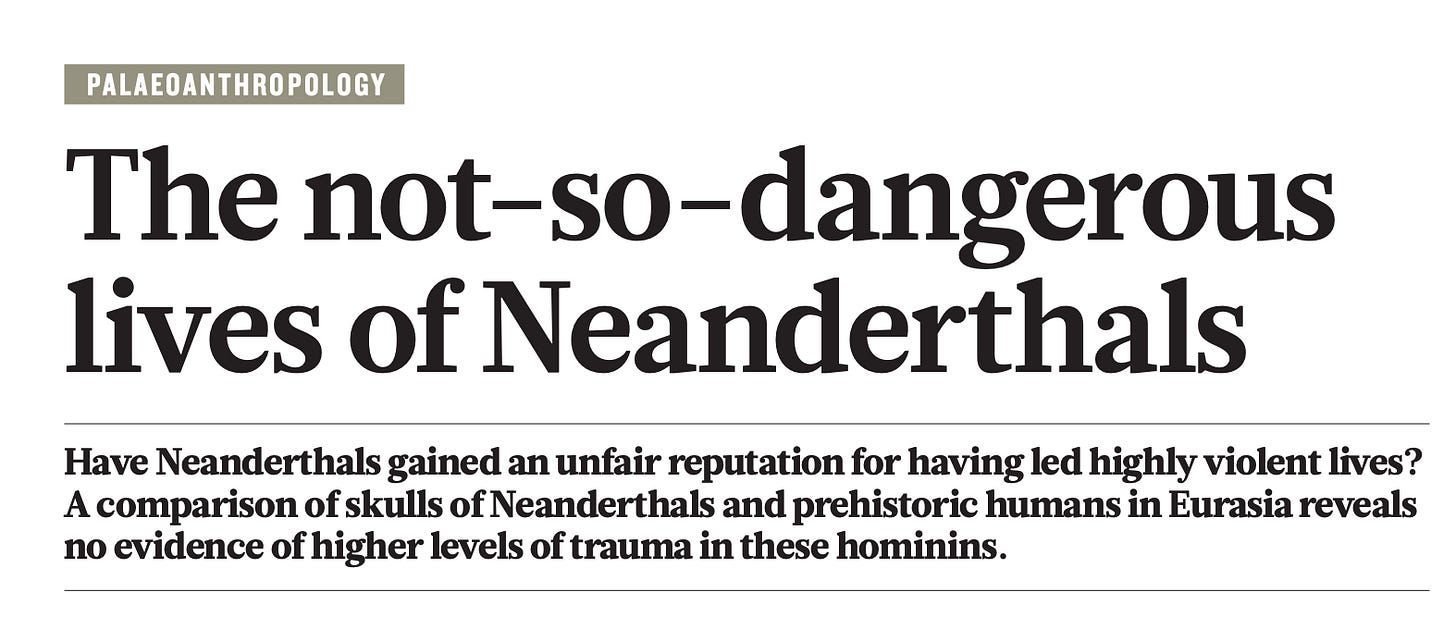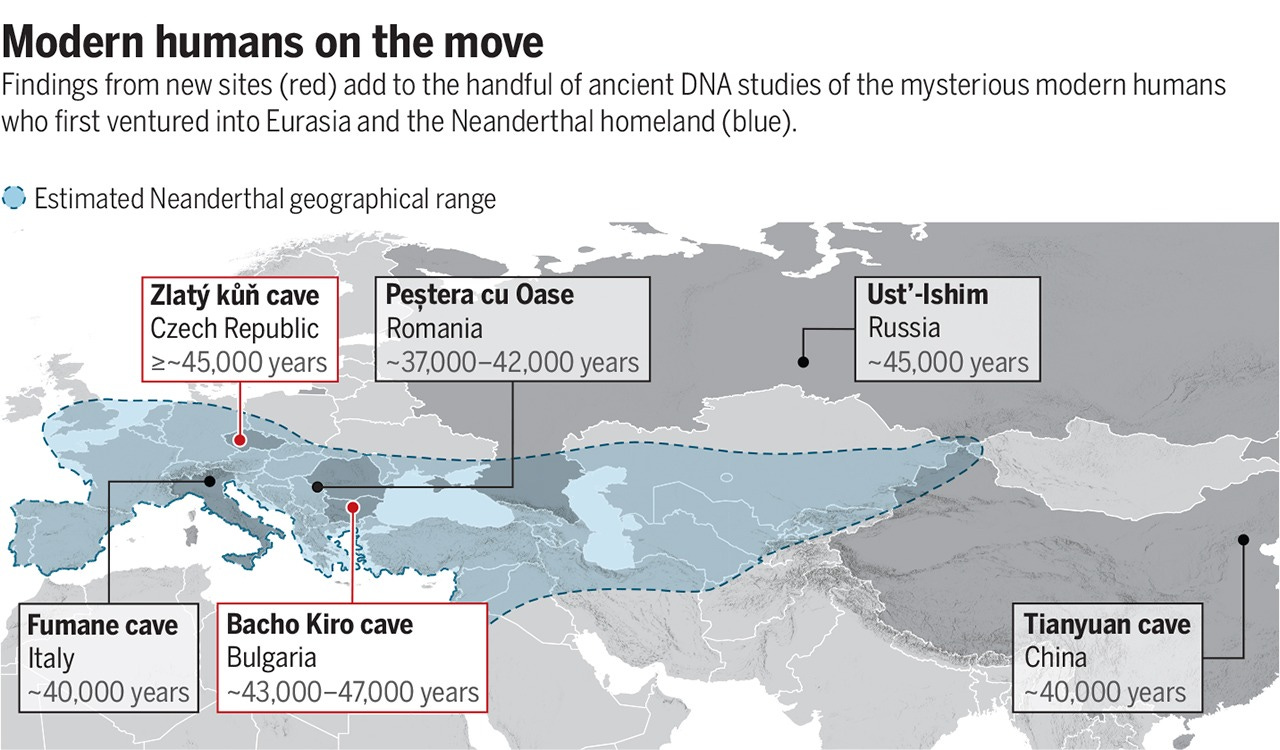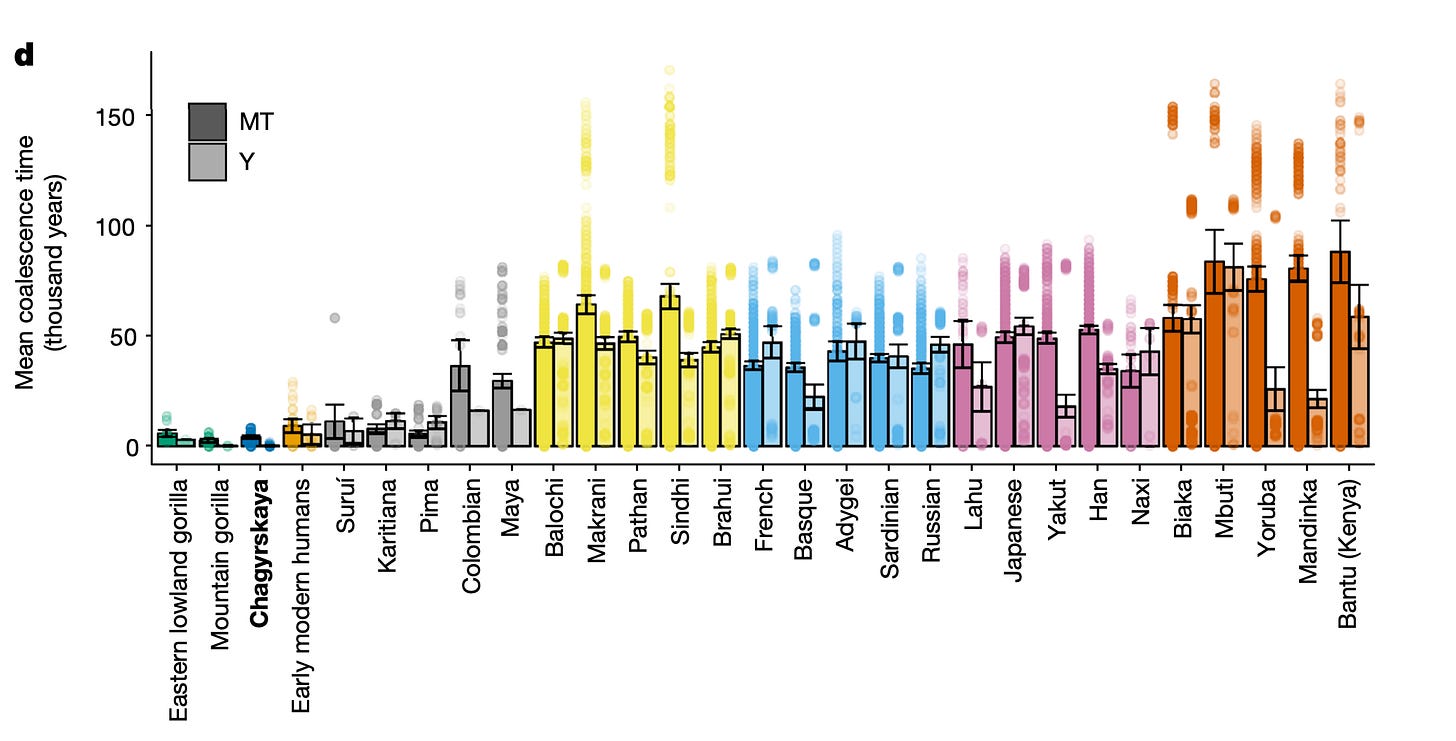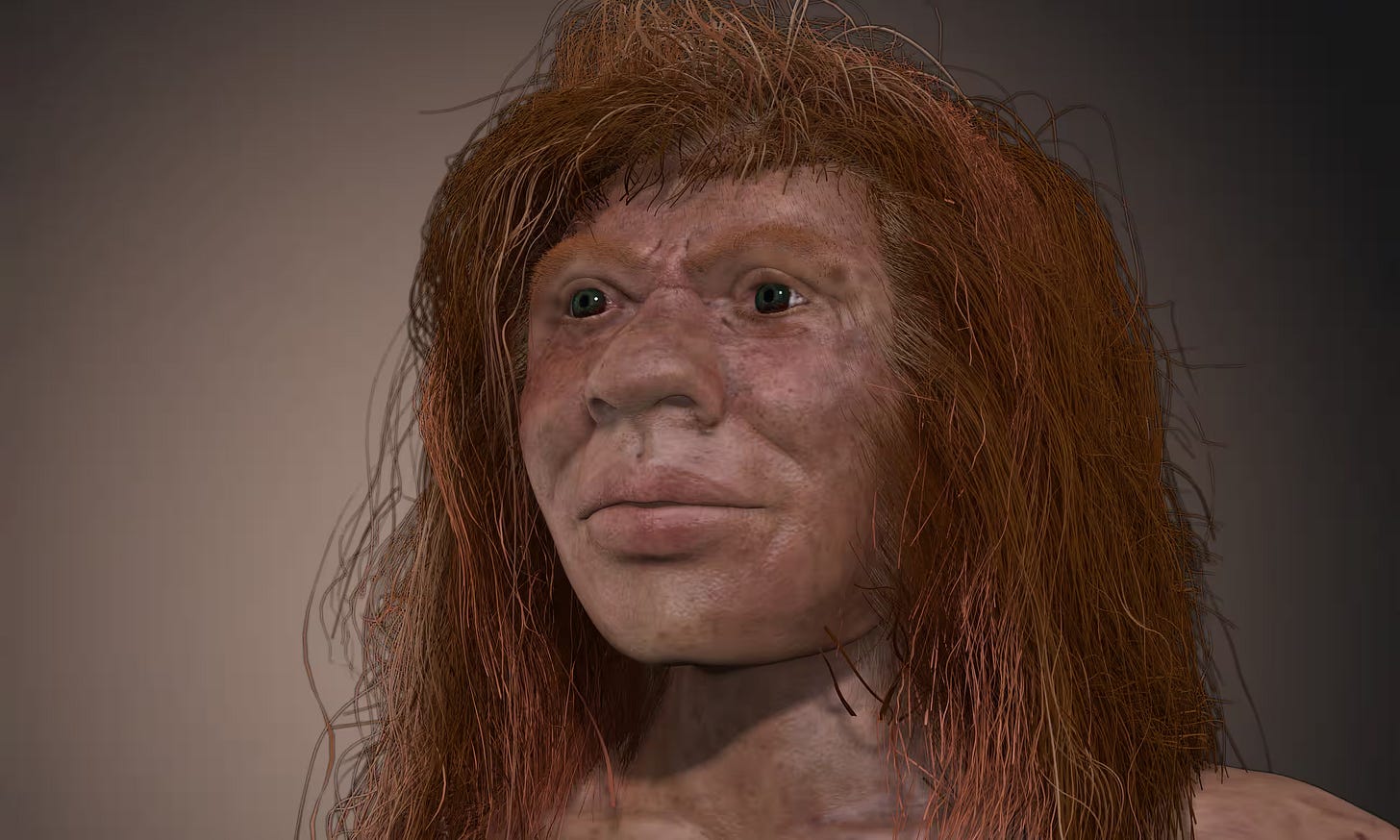Why Did The Neanderthals Die Out?
Recent evidence suggests Neanderthal women may have abandoned their Neanderthal partners for Homo sapiens males, leading to a rapid population crash.
Neanderthals. They’re extinct. We’re not.
It’s easy to see why these five words would lead many to hastily conclude that ancient murderous humans were responsible for the demise of our Neanderthal cousins. It’s hardly an insane idea. Humans do, after all, have a robust track record in that department. Since 1500, we have been directly responsible for the extinction of more than 800 species, and as I write this, we continue to push 17,000 more species to the brink of extinction [1, 2]. Some scientists have even described this as the sixth mass extinction wave in the earth’s history.
We also have a long history where we’ve seen humans carry out genocides against minorities and indigenous people. In light of all this, a genocide against Neanderthals doesn’t sound at all unlikely. Humans are kind of terrible, if I’m being perfectly honest with you. That said, I don’t know.
I’ve tried to convince myself of this idea that ancient humans murdered (then replaced) indigenous Neanderthals… and I just couldn’t get my head around it.
For starters, there is no real evidence that the early humans migrating into Neanderthal territory were in any way more violent than their Neanderthal contemporaries. A study comparing the skulls of Neanderthals and prehistoric humans in Eurasia concluded that ancient humans and Neanderthals experienced similar levels of head trauma [3]. This suggests that Neanderthals did not experience higher levels of violence than Homo sapiens did – whether it was at the hands of other Neanderthals or ancient human colonisers.
The timelines also raise quite a few eyebrows?
Neanderthals resided in Eurasia for approximately 300,000 years between going extinct around 40,000 years ago [4]. And yet, despite this long history (and the adaptations Neanderthals must have acquired throughout these millenia), we’re supposed to believe that Neanderthals succumbed to ancient human invaders – who arrived into Neanderthal territory with no knowledge nor much in the way of adaptations to the local environment? And… in addition to all this… early humans were apparently also so ruthlessly efficient that they massacred every last Neanderthal in less than 2,000 years? All the while still managing to breed with them? To me, all of this sounds a tad bit far-fetched and overly complicated.
A more recent theory that I like substantially more is that Neanderthal women may have just simply abandoned Neanderthal males, choosing to mate with Homo sapiens males instead. These Neanderthal women would have had children with their new Homo sapiens sexual partners, choosing to permanently live within Homo sapiens social groups. Without women in their social groups, Neanderthal populations would have rapidly collapsed.
There is actually a surprising amount of evidence to support this idea.
A 2022 study in Nature demonstrated that female Neanderthals were much more mobile than male Neanderthals [6]. The Y-chromosome diversity was found to be an order of magnitude lower than mitochondrial diversity in the specimens studied, suggesting that Neanderthals may have had a culture where Neanderthal females migrated between communities. In fact, the same study shows a surprisingly high degree of homozygosity, which leads us to believe that Neanderthals lived in small close-knit groups with high inbreeding.
It’s likely that by the time humans made it out of Africa, Neanderthals were already on their way out. Their preference for living in isolated small communities and the reduced genetic diversity would have made that a sure thing. Human arrival only sped up the population collapse.
So, why would Neanderthal women have chosen to live in Homo sapiens communities, abandoning Neanderthal males and communities?
Well… finding that out is complicated by just how truly difficult it is to find a first-generation specimen of a person of mixed ancestry.
That said, in 2018, scientists discovered the first (and so far only) remains of a first generation hominid hybrid. Denny was a 13-year old girl who lived 90,000 years ago in the Altai Mountains of Siberia in Russia [7].
She was born to a Neanderthal mother and a Denisovan father.
A first generation Neanderthal x Homo sapien hybrid is yet to be identified.
However, here is a non-exhaustive list of ideas why Neanderthal females may have ended up living in Homo sapien communities, pushing Neanderthals towards extinction:
If Neanderthal women were highly mobile (regularly migrating between Neanderthal communities), they may have been captured by ancient Homo sapiens.
There is also some evidence that Neanderthal women may have had an easier time in childbirth after mating with Homo sapiens males, as those babies would have been smaller in size than babies born to Neanderthal males. This would have made pregnancy and childbirth much less perilous for Neanderthal mothers [8].
Neanderthal women may have also just enjoyed Homo sapiens communities more. That’s because while Neanderthals did demonstrate strong pro-social bonds, they didn’t socialise much. Our evidence suggests that Neanderthals stayed in small – 12-24 person – close knit groups, preferring not to interact with outsiders, including other Neanderthal communities. Homo sapiens, on the other hand, were much “jovial.” Early human communities would routinely travel up to 60 miles just to meet other Homo sapiens groups.
Finally, it’s important to remember that though Neanderthal DNA appears in H. sapiens fossils, we see very little human DNA in any Neanderthal specimens, suggesting this was a one-sided exchange. Moreover, there is new evidence coming in that male Neanderthals may have been genetically incompatible with female Homo sapiens, as male Neanderthals had Y chromosomes that had acquired mutations that produced an immune response in female Homo sapiens [9]. This would have resulted in miscarriages of male hybrid babies.
In short, the evidence points to the only viable Neanderthal x Homo sapiens hybrids having been female and the result of a Neanderthal female mating with a Homo sapien male (rather than the other way round).
This would have reduced the Neanderthal effective population size, pushing Neanderthals (who were already in a perilous place) past the point of no return.
Citations:
[1] Boonman, C.C.F., Serra-Diaz, J.M., Hoeks, S. et al. More than 17,000 tree species are at risk from rapid global change. Nat Commun 15, 166 (2024). https://doi.org/10.1038/s41467-023-44321-9
[2] Gerardo Ceballos et al. ,Accelerated modern human–induced species losses: Entering the sixth mass extinction.Sci. Adv.1,e1400253(2015).DOI:10.1126/sciadv.1400253
[3] Marta, Mirazón, Lahr. (2018). The not-so-dangerous lives of Neanderthals. Nature, 563(7733):634-636. doi: 10.1038/D41586-018-07343-8
[4] Katerina, Harvati. (2011). Neanderthals: fossil evidence and DNA.. Anthropologischer Anzeiger, 68(4):379-392. doi: 10.1127/0003-5548/2011/0176
[5] Igor, Djakovic., Alastair, J.M., Key., Marie, Soressi. (2022). Optimal linear estimation models predict 1400–2900 years of overlap between Homo sapiens and Neandertals prior to their disappearance from France and northern Spain. Dental science reports, 12(1) doi: 10.1038/s41598-022-19162-z
[6] Skov, L., Peyrégne, S., Popli, D. et al. Genetic insights into the social organization of Neanderthals. Nature 610, 519–525 (2022). https://doi.org/10.1038/s41586-022-05283-y
[7] Slon, V., Mafessoni, F., Vernot, B. et al. The genome of the offspring of a Neanderthal mother and a Denisovan father. Nature 561, 113–116 (2018). https://doi.org/10.1038/s41586-018-0455-x
[8] Ponce de León MS, Golovanova L, Doronichev V, et al. Neanderthal brain size at birth provides insights into the evolution of human life history. Proc Natl Acad Sci U S A. 2008;105(37):13764-13768. doi:10.1073/pnas.0803917105
[9] Ann Gibbons ,Neandertals and Moderns Made Imperfect Mates.Science343,471-472(2014).DOI:10.1126/science.343.6170.471








